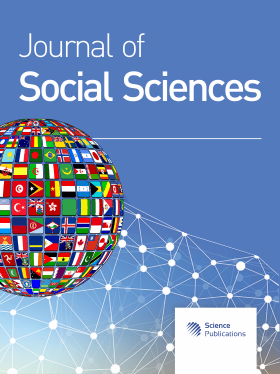Environment Changes of Lampao Dam Communities in Northeast Thailand
Abstract
Problem statement: The objective of this research was to study the environment change of Lampao Dam communities in Northeast Thailand, being a case study of the Sa-Adnathom community, Lamklong sub-district, Muang, Kalasin province, adjacent to the Lampao Dam. Approach: A qualitative research, it started with a review of literature and related researches. Field data were collected by way of interviews and both participant and non-participant observations, involving 15 informants including senior-villagers, who had lived in the village some 10-20 years. The research data were descriptively analyzed and presented. Results: As a result its was found that the Lampao Dam communities date back 200 years to the era of Chiangsom Kingdom. Deserted due to deadly epidemics, the area was later on repopulated by migrants from Yang Talad district, Kalasin province. A new community, called Sa-Adnathom, was born. Prior to the inception of the National Plan for Social and Economic Development in 1961, the environment of this community was complete with fertile land and natural resource abundance. People lived in harmony with nature and relied on resources from it for their livelihood, especially from Nong Waeng reservoir, Phan and Yang streams and Khoke Ngoo forest. But with the implementation of the first Plan for Social and Economic Development in 1961-1966 the Thai government started the construction of the Lampao Dam in 1963. Completed in 1968, the Dam took land from the villagers, part of which were simply flooded. This forced the village farmers to change their means of livelihood from relying on forest and rivers to production methods which by necessity involved purchase of machines and usage of chemical fertilizers. In short, a change from farming to fishing in Lampao Dam. Their values also changed from local exchanges of goods to money economy, which only led to household debts, increasing with rising degree of consumerism. Eventually people in the community realized the problems. Together they turned around, changing the direction of their development from money-oriented economy back to environment rehabilitation in the community. Starting in 1997 they adopted the King's philosophy of Sufficiency Economy. This concept of development did help to revive the environment of Sa-Adnathom community-their farm land, natural water resource and forest. They engaged in organic farming, reduced mono-crop growing and returned to reliance on natural means to meet their four basic needs in life. Conclusion: This research yielded a recommendation regarding policy guidelines for community development in Thailand. That is, the environment impact on the adjacent community of the dam should be given a careful consideration before such a project would be launched.
DOI: https://doi.org/10.3844/jssp.2008.334.337

- 6,107 Views
- 3,761 Downloads
- 2 Citations
Download
Keywords
- Environment change
- lampao dam community
